La Cense - Mélin




 Paiement sécurisé par
Paiement sécurisé par





La Cense - Mélin
Bienvenue à La Cense - Mélin!
Evadez-vous au coeur d'un des Plus Beaux Villages de Wallonie.
Notre chambre d'hôtes, au sein d'une ancienne ferme en pierre de Gobertange et brique rouge, entourée de verdure, vous invite à ralentir, respirer et savourer l'instant.
Que vous soyez de passage pour un mariage, une fête de famille, une escapade en vélo, un séminaire ou simplement pour découvrir nos beaux villages blancs et la pierre de Gobertange, ici, le calme et la convivialité sont au rendez-vous.
Florence & Serge vous feront profiter d'un moment de quiétude au sein d'une bâtisse authentique dans une chambre d'hôtes sobre, agréable, lumineuse.
Un petit air de vacances, comme si on était dans le Sud!
Votre confort, nos services
Notre chambre
Vue sur cour
Nos options
Lits jumeaux
Disposition en lits jumeaux gratuite moyennant réservation à l'avance.
Petit déjeuner
Petit déjeuner varié rien qu'avec de bons produits (max. bio, local). En cas de souci d'allergie, faites-le nous savoir, nous ferons de notre mieux pour en tenir compte.
Lit bébé/enfant
Cette offre comprend un lit (0-6m)/(6m-3a)/(3-15a) + draps + essuie/gant de bain + chaise TripTrap avec accessoires + coussin à langer + chauffe eau/bain-marie.
Véhicule électrique
Possibilité de recharger votre véhicule électrique (Prise 400V 16A - T2 - 11 KW/h ou Prise Green-Up 220V mono - 3.5 KW/h) au prix de 0.50 €/Kw.
Location de vélos
Location de vélos y compris vélos électriques (XS + XL). Conditions à discuter sur place.
Balades à pied ou en...
Documentation à votre disposition pour les balades à pied ou en vélo (FR/NL).
Si vous souhaitez être accompagné pour une balade à pied ou en vélo dans les environs, cela peut s'envisager en fonction de la disponibilité. Serge vous accompagnera avec plaisir à la découverte de Mélin et ses environs en français, anglais ou néerlandais.
L'information est également disponible sur les sites des organisations suivantes:
Les Plus Beaux Villages de Wallonie (FR/NL/EN),
Wallonia.be (FR/EN/NL/DE/IT),
La Maison du Tourisme du Brabant Wallon (FR),
Qualité Village Mélin (FR),...
Offres Spéciales
Séjour de 4-5 jours
Réduction journalière de 15 €/j pour un séjour de 4-5 jours (sans entretien de chambre et sans remplacement de lingerie).
Séjour de 2-3 jours
Réduction journalière de 10 €/j pour un séjour de 3 jours (sans entretien de chambre et sans remplacement de lingerie).
Séjour de 6-7 jours
Réduction journalière de 20 €/j pour un séjour de 6-7 jours (sans entretien de chambre et sans remplacement de lingerie).
